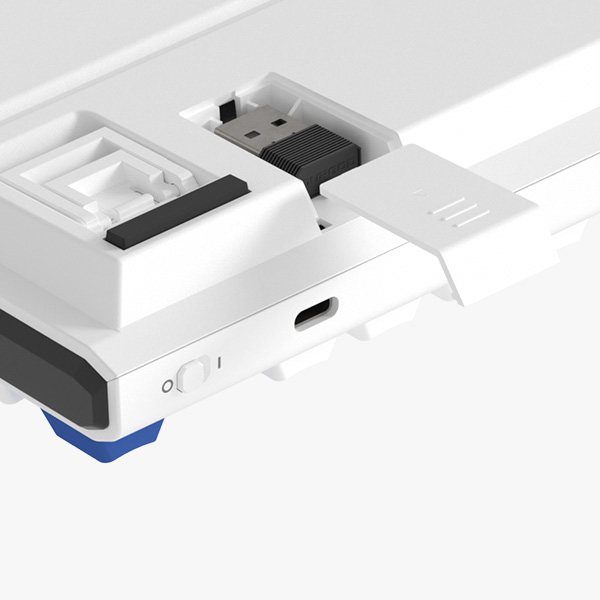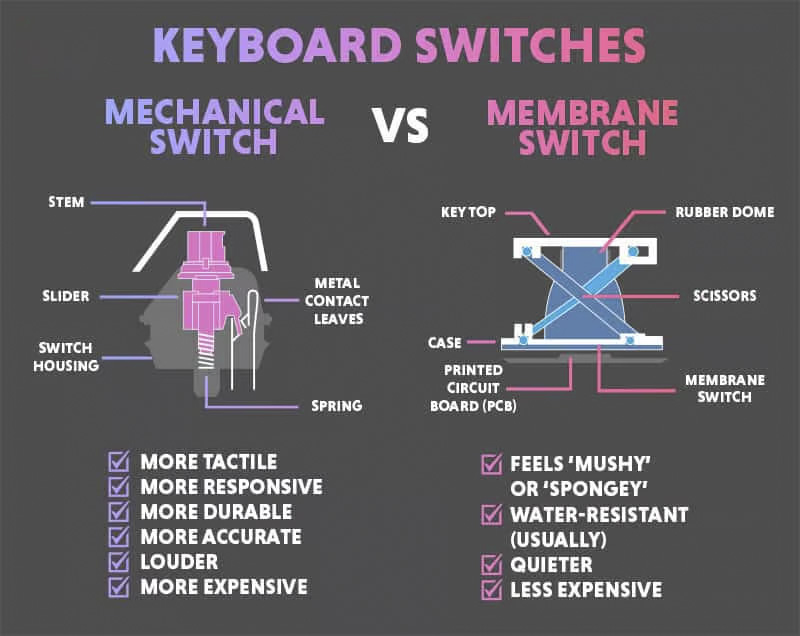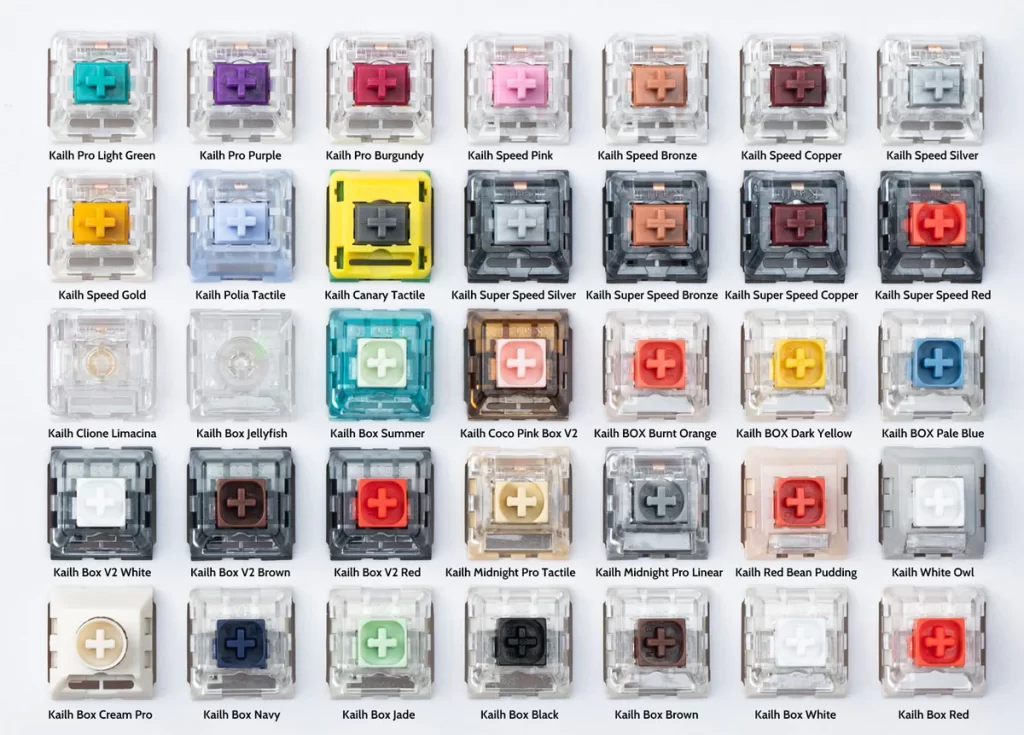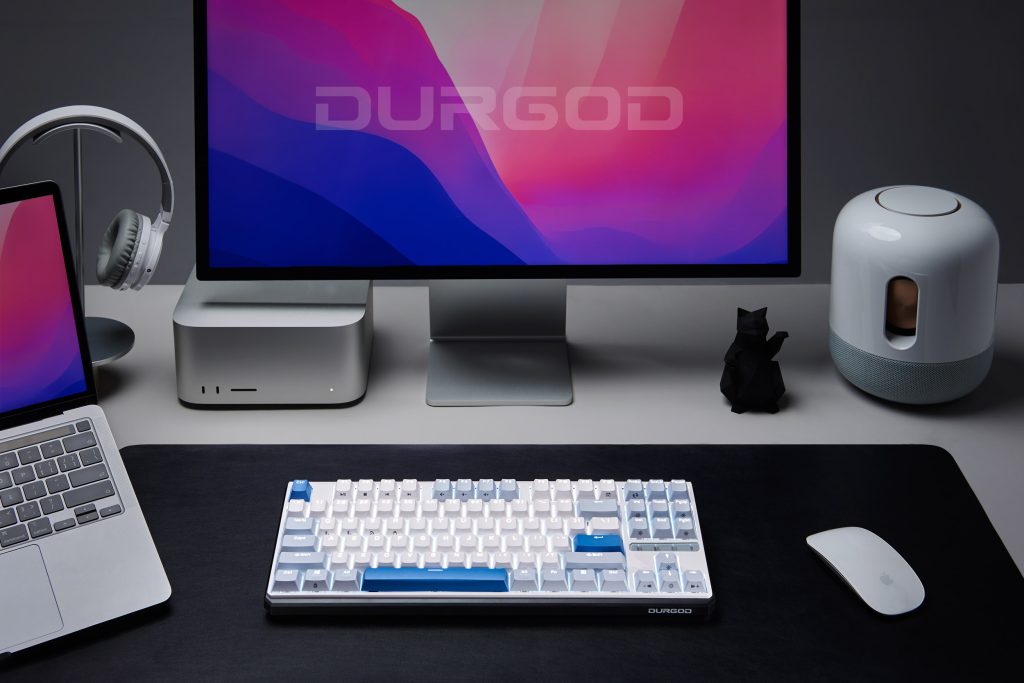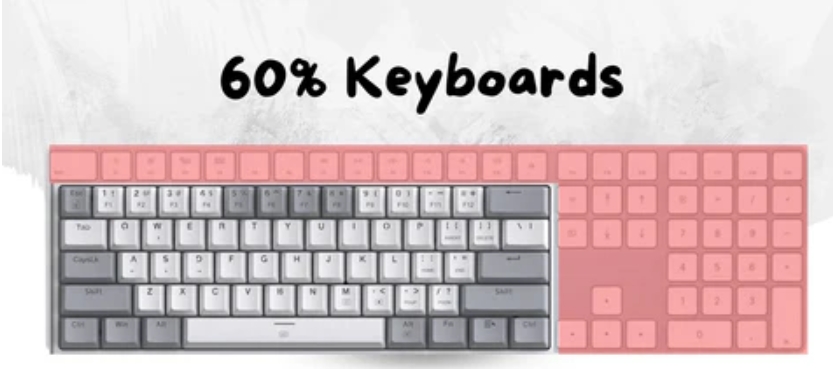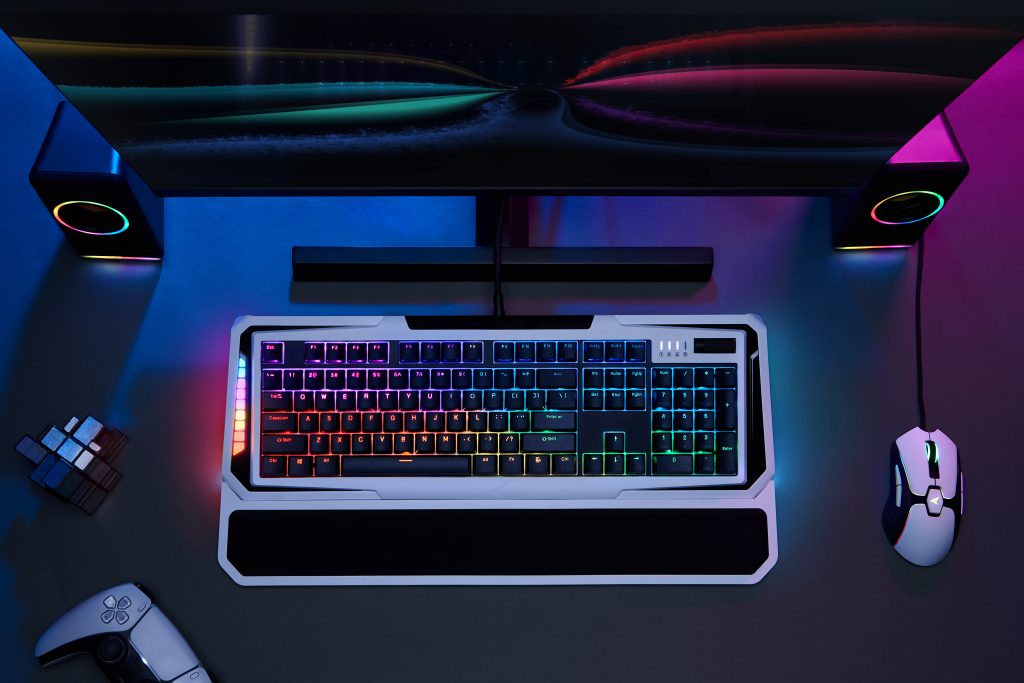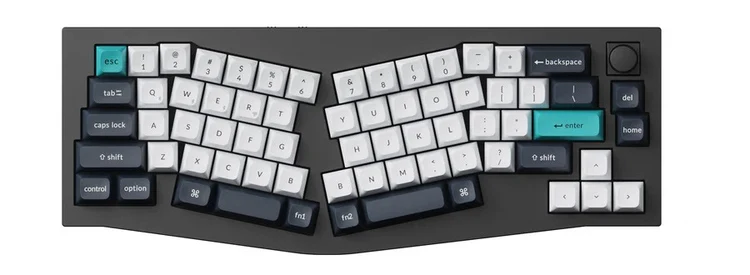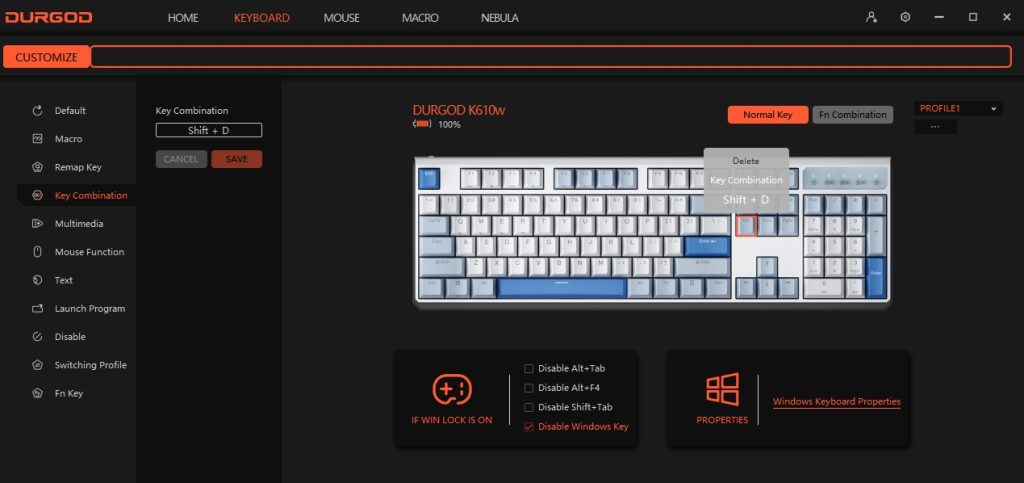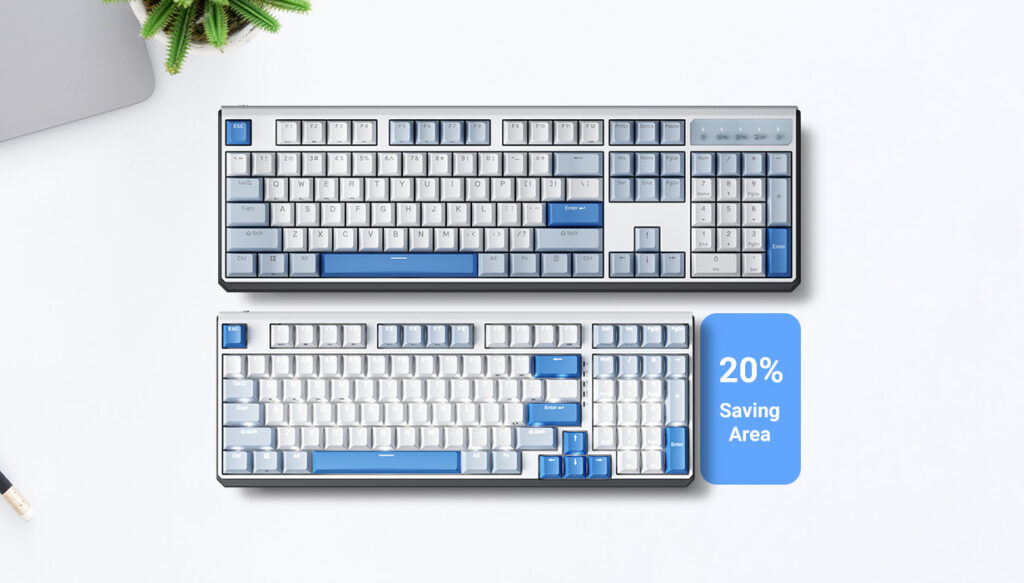In the world of mechanical keyboards, “dual mode” and “tri-mode” highlight the connectivity options that bolster the keyboard’s adaptability across various devices and settings. These modes enrich the user experience by offering flexibility for different needs and preferences. Let’s delve into their features, benefits, and ideal scenarios for use.
Dual Mode Mechanical Keyboards:
- Functionality: a. Dual-mode keyboards blend wired (typically via USB) and wireless (often Bluetooth) connectivity, enabling users to switch based on their preference for wireless freedom or a stable, lag-free wired connection. b. This adaptability suits users who require mobility without sacrificing performance.
- Advantages: a. Versatility: Suitable for multiple devices, including those lacking USB ports. b. Mobility: The wireless option promotes a tidier, cable-free workspace. c. Precision: The wired connection guarantees minimal latency, crucial for precision tasks like gaming.
- Use Cases: a. Perfect for individuals who transition between different devices or workspaces. b. Ideal for gamers valuing a wired connection for play but prefer wireless flexibility for other activities.

DURGOD K710 Dual-mode Mechanical Keyboard
K710 is a special dual-mode keyboard, unlike the normal dual-mode configuration, it features Bluetooth and 2.4G Dual-mode.


Tri-Mode Mechanical Keyboards:
- Functionality: a. Tri-mode keyboards offer three connectivity options: wired (USB), Bluetooth wireless, and 2.4GHz wireless via a USB dongle, enhancing the connection stability beyond Bluetooth. b. The inclusion of a 2.4GHz connection offers a faster, more stable wireless option.
- Advantages: a. Improved Wireless Connectivity: 2.4GHz complements Bluetooth, ensuring stability in varied environments. b. Gaming Suitability: The lower latency of 2.4GHz is advantageous for gaming. c. Flexibility: Users can select the best connection type for each scenario, optimizing performance and compatibility.
- Use Cases: a. Ideal for those managing multiple devices, especially in mixed-platform setups. b. A boon for gamers needing reliable wireless connectivity without compromising on device compatibility.
Comparison and Considerations
- Cost and Setup: Tri-mode keyboards are typically pricier due to their advanced connectivity options and might require more effort to set up.
- Battery Management: Operating in wireless modes consumes battery, necessitating regular charging or battery changes.
- Portability: While both offer great portability, carrying a 2.4GHz dongle for tri-mode may be slightly less convenient.
Conclusion
Dual and tri-mode mechanical keyboards reflect the evolving landscape of keyboard connectivity, delivering unmatched flexibility and utility for diverse users. Dual-mode keyboards balance functionality and simplicity, whereas tri-mode keyboards cater to those demanding comprehensive connectivity options, including gaming-friendly wireless connections. The choice hinges on specific user requirements, device compatibility, and wireless connectivity preferences, enhancing mechanical keyboards’ utility in our increasingly mobile and multi-device-oriented lives.
The majority of DURGOD’s keyboards are tri-mode mechanical keyboards, visit DURGOD and experience the ultimate versatility, adaptability, and convenience, as well, the tactile enjoyment of tri-mode mechanical keyboards.
For more knowledge of mechanical keyboards, visit DURGOD.



